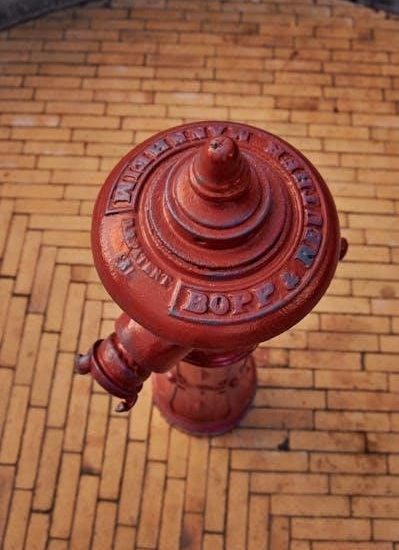Antique cast iron Dutch ovens are treasured for their durability and historical charm, offering insights into culinary traditions. This guide helps enthusiasts identify and appreciate these timeless cookware pieces, focusing on key features like maker’s marks, size, and design elements to uncover their origins and value.
Overview of Cast Iron Dutch Ovens
A cast iron Dutch oven is a heavy, thick-walled cooking vessel with a tight-fitting lid, traditionally made of cast iron. These ovens are characterized by their three legs, a bail handle, and a convex or concave lid designed to retain heat evenly. They are highly versatile, suitable for baking, boiling, frying, and slow cooking. The thick iron construction allows for excellent heat retention, making them ideal for outdoor use over campfires or indoor stovetops. Dutch ovens often feature a “heat ring” on the lid, which helps distribute heat uniformly. Their durability and longevity have made them popular among collectors and cooks alike, with many antique pieces still functional today. The design has remained largely unchanged, testament to their timeless usefulness in various culinary traditions.
Importance of Identification for Collectors and Enthusiasts
Identifying antique cast iron Dutch ovens is crucial for collectors and enthusiasts, as it reveals their historical significance, value, and authenticity. By examining maker’s marks, size numbers, and design features, enthusiasts can trace the oven’s origins to renowned manufacturers like Griswold or Wagner. This process not only aids in determining the piece’s age and rarity but also helps differentiate genuine antiques from modern replicas. Accurate identification ensures that collectors can appraise their items correctly, making informed decisions when buying or selling. Moreover, understanding the unique characteristics of these ovens fosters a deeper appreciation for their craftsmanship and historical context. For many, the thrill lies in uncovering the stories behind these timeless kitchen staples, preserving culinary heritage for future generations.
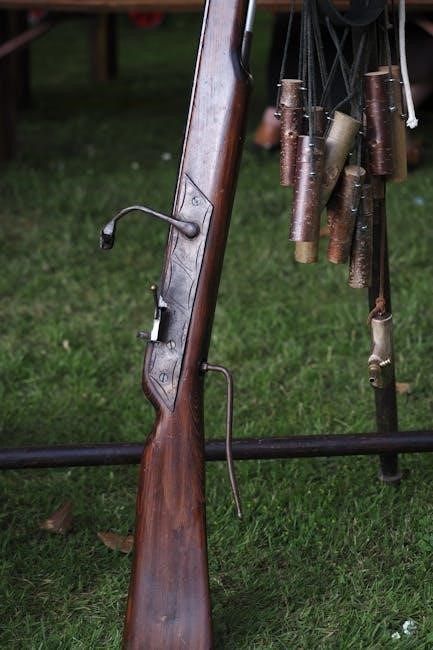
Historical Background of Cast Iron Dutch Ovens
Cast iron Dutch ovens have been cherished in kitchens for centuries, evolving from heavy, thick-walled pots to refined designs by the 19th century, reflecting culinary and cultural heritage.
Origins and Evolution of Cast Iron Cookware
Cast iron cookware traces its origins to ancient China, with early examples dating back to the Han Dynasty. By the Middle Ages, cast iron pots became common in Europe, particularly in England, where they were used for slow cooking over open fires. The Dutch oven, a staple in colonial America, evolved from these heavy, thick-walled pots. Over time, designs refined, featuring handles, legs, and tight-fitting lids. By the 18th and 19th centuries, foundries like Griswold and Wagner pioneered advancements, introducing iconic designs with heat rings and refined finishes. These pieces became indispensable in kitchens, blending durability with culinary versatility. Their evolution reflects both practical innovation and cultural adaptation, making them cherished collectibles today.
Popular Manufacturers in the 19th and 20th Centuries
During the 19th and 20th centuries, several manufacturers became synonymous with high-quality cast iron Dutch ovens. Griswold and Wagner were among the most prominent, celebrated for their durability and craftsmanship. Griswold, known for its iconic designs, produced pieces like the highly sought-after “Griswold” line, while Wagner’s Sidney pattern gained a loyal following. Both companies incorporated distinctive features such as heat rings and maker’s marks, which are now key identifiers for collectors. Other notable manufacturers included Lodge, which remains a significant player in cast iron cookware. These brands not only set industry standards but also left a lasting legacy in the world of culinary collectibles, making their products highly valuable to enthusiasts today.
Regional Variations and Cultural Significance
Antique cast iron Dutch ovens often reflect regional craftsmanship and cultural traditions. Manufacturers in different areas developed distinct designs, such as variations in handle shapes, leg styles, and lid types, which can help identify their origins. These pieces were integral to daily cooking, particularly in rural households, where they were used for slow-cooked meals over open fires or stoves. The cultural significance of Dutch ovens lies in their role as symbols of self-sufficiency and hearty, home-cooked cuisine. They also represent a connection to earlier times, making them cherished collectibles and historical artifacts. Understanding these regional nuances not only aids in identification but also deepens appreciation for their historical and cultural importance in American kitchens.

Key Characteristics for Identification
Key characteristics for identifying antique cast iron Dutch ovens include unique handles, legs, lids, heat rings, and surface textures, aiding enthusiasts in accurate recognition and authentication.
Physical Features: Handles, Legs, Lids, and Heat Rings
Antique cast iron Dutch ovens are distinguished by their distinctive physical features, which play a crucial role in identification. Handles are often heavy and bail-style, designed for durability and ease of carrying. Legs are typically sturdy and short, providing stability over open fires. Lids are concave, allowing for even heat distribution, and often feature a lip for pouring. Heat rings, the circular ridges around the base, can vary in design, with some ovens having unbroken or seamless rings. These features, along with the overall craftsmanship, help enthusiasts and collectors determine the age, manufacturer, and authenticity of the piece. Examining these elements closely is essential for accurate identification and appreciation of the oven’s heritage.
Maker’s Marks and Foundry Stamps
Maker’s marks and foundry stamps are invaluable for identifying antique cast iron Dutch ovens. These markings, often located on the bottom or handle, reveal the manufacturer and production period. Brands like Griswold and Wagner feature distinctive logos, such as Griswold’s iconic cross or Wagner’s “1891” mark. Size numbers and pattern numbers are also common, aiding in precise identification. Stamps may indicate the foundry’s location or date, while unmarked pieces can still be traced through their design and casting style. Collectors should examine these marks closely, as they are key to determining the oven’s origin, rarity, and value. These stamps not only authenticate the piece but also connect it to its historical context, making them essential for enthusiasts and collectors alike.
Size and Capacity Indicators
Size and capacity indicators are crucial for identifying antique cast iron Dutch ovens. Many vintage pieces feature numerical markings, such as “No. 8” or “10 5/8 In,” which denote size and capacity. These numbers often appear on the bottom or lid and correspond to standard measurements used by manufacturers. Larger numbers typically indicate bigger capacities, making them suitable for cooking for multiple people. The size number helps collectors understand the oven’s intended use and historical context. For example, a Dutch oven marked “No. 8” is a common size, ideal for family cooking. These indicators, combined with maker’s marks, aid in verifying authenticity and determining value. They also help enthusiasts match their pieces to historical production standards, ensuring accurate identification and appreciation of these timeless cookware items.
Surface Texture and Finish
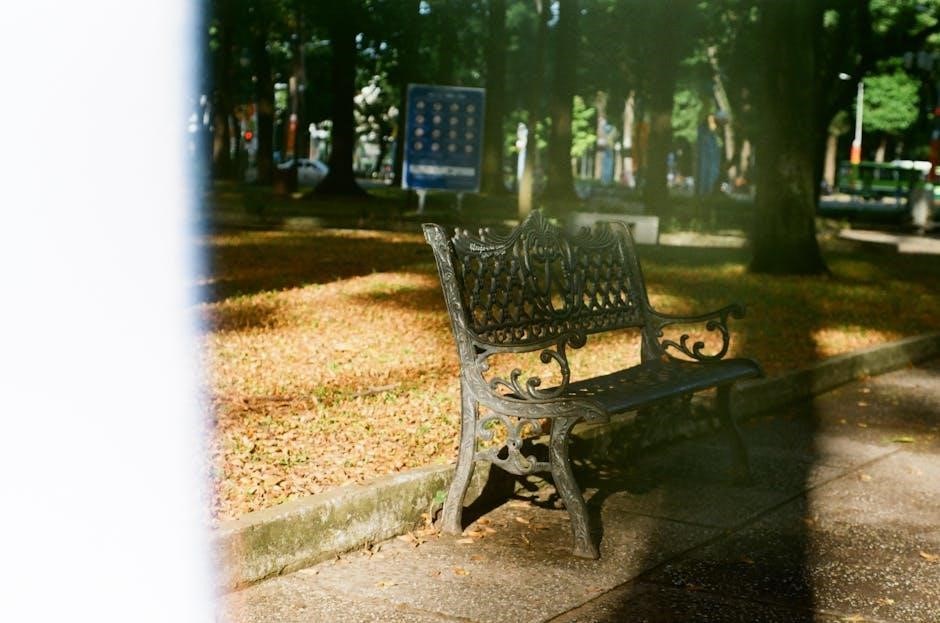
Surface texture and finish are essential factors in identifying antique cast iron Dutch ovens; Vintage pieces often exhibit smooth, even surfaces due to years of polishing and use, while newer or replicated ovens may have a more textured, sand-cast appearance. The interior typically features a seasoned finish, which develops over time, while the exterior may show signs of wear or patina. Older Dutch ovens sometimes have distinct hammering dimples or slight imperfections from the casting process. The heat ring, a circular ridge around the bottom, is a common feature on many antique models. The lid often has a concave design with a bail handle, and its surface may display similar textures to the body. These details help enthusiasts distinguish genuine antiques from modern replicas, aiding in accurate identification and valuation.
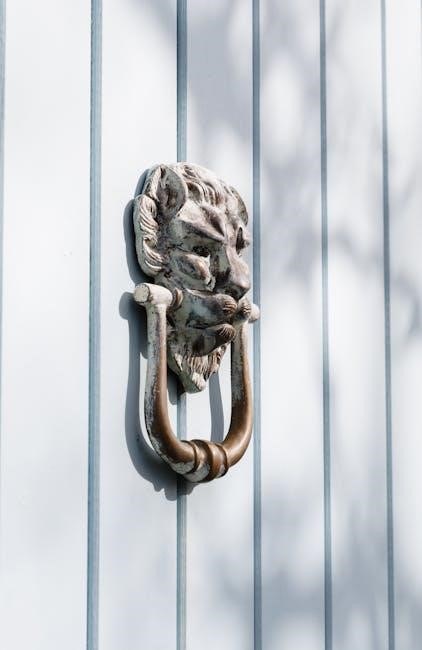
Identifying Specific Manufacturers
Manufacturer-specific features like logos, size numbers, and pattern markings help distinguish brands such as Griswold, Wagner, and Lodge, aiding collectors in identifying their unique Dutch oven designs.
Griswold Cast Iron Dutch Ovens
Griswold cast iron Dutch ovens are highly sought after by collectors due to their exceptional quality and craftsmanship. Established in the late 19th century, Griswold became a leading manufacturer of cast iron cookware, with their Dutch ovens featuring distinctive size numbers and pattern markings. These pieces often include a heat ring and a gate mark on the bottom, which are key identifiers. The “Book of Griswold & Wagner,” also known as the blue book, is an invaluable resource for identifying and dating Griswold Dutch ovens, offering detailed descriptions and over 1,000 photographs. Collectors prize Griswold Dutch ovens for their durability, even heat distribution, and historical significance, making them a cornerstone of any vintage cast iron collection.
Wagner Cast Iron Dutch Ovens
Wagner cast iron Dutch ovens are another cornerstone of collector interest, with their own distinct features and historical significance. Known for their high-quality craftsmanship, Wagner Dutch ovens often bear the “Wagner Ware Sidney” logo, a key identifier for collectors. These pieces typically feature a heat ring, size numbers, and a bail handle, with markings that help determine their age and origin. Wagner Dutch ovens are prized for their durability and cooking performance, making them a favorite among both collectors and chefs. The “Book of Griswold & Wagner” provides extensive details about Wagner Dutch ovens, including photographs and production timelines, aiding enthusiasts in identification and valuation. Wagner Dutch ovens are a testament to the golden era of cast iron cookware, blending functionality with timeless design.
Other Notable Manufacturers
Beyond Griswold and Wagner, other manufacturers like Lodge, BSR, and Vollrath also produced high-quality cast iron Dutch ovens. Lodge, for instance, is renowned for its iconic logo and long-standing production history, with many of its Dutch ovens featuring size numbers and heat rings. BSR, known for its durability, often includes markings like “BSR” or “Made in USA,” while Vollrath Dutch ovens are recognized for their smooth finishes and distinct logos. These manufacturers, though less prominently documented than Griswold and Wagner, still hold significant value for collectors due to their craftsmanship and historical relevance. Identifying these brands requires a keen eye for their unique markings and design elements, which are detailed in resources like “The Cast Iron Collector” and other enthusiast guides.
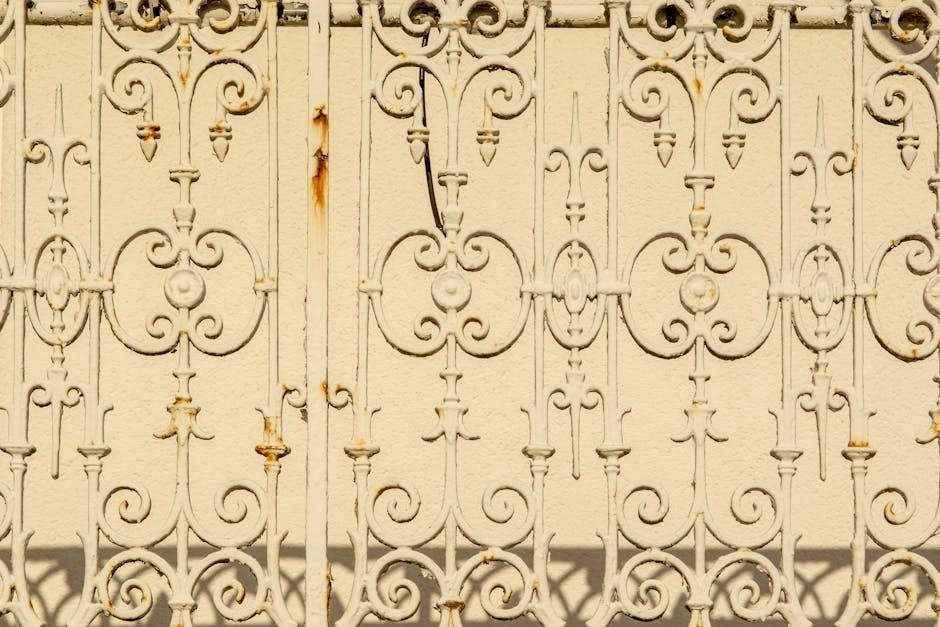
Dating Your Antique Dutch Oven
Dating antique Dutch ovens involves analyzing production periods, logos, and pattern numbers. Manufacturers like Griswold and Wagner often stamped their pieces, helping determine age and authenticity.
Understanding Production Periods
Understanding production periods is crucial for dating antique Dutch ovens. Most cast iron cookware was produced between the 19th and mid-20th centuries. Griswold, a prominent manufacturer, operated from the 1860s to the 1950s, while Wagner produced pieces until 1952. Early pieces often lack clear markings, making them harder to date, while later items feature logos, model numbers, or patent dates. The transition from unmarked, hand-poured pieces to stamped logos indicates a shift in manufacturing practices. Collectors examine these markers to pinpoint the era of production. Additionally, the presence of gate marks on older pieces or the introduction of heat rings in later models helps narrow down the timeline. These details are essential for accurately dating and authenticating antique Dutch ovens.
Identifying Vintage vs. Modern Replicas
Distinguishing vintage Dutch ovens from modern replicas requires careful examination. Vintage pieces typically exhibit a smooth, seasoned surface developed over decades of use, while modern replicas may have a rougher, sandblasted texture. Look for maker’s marks or logos, as most replicas lack authentic historical stamps. Vintage Dutch ovens often feature heavier construction and distinct handle or leg designs, whereas newer models may appear more uniform. The presence of a solid, unbroken heat ring on older pieces is another hallmark, as modern replicas sometimes show primer or casting imperfections. Collectors should also inspect for signs of aging, such as patina or wear patterns, which are rarely replicated convincingly in modern reproductions.
Role of Pattern Numbers and Logos
Pattern numbers and logos play a crucial role in identifying and authenticating antique cast iron Dutch ovens. Manufacturers like Griswold and Wagner often stamped their products with unique identifiers, such as size numbers, pattern numbers, or brand logos, which help determine the piece’s origin and age. These markings, often found on the bottom or handle, serve as a fingerprint for collectors. For instance, Griswold pieces frequently feature a size number and pattern number, while Wagner items may include a logo or specific design elements. By analyzing these markings, enthusiasts can trace the oven’s production period and verify its authenticity. Collectors should always cross-reference these details with historical records or trusted guides to ensure accurate identification and valuation.
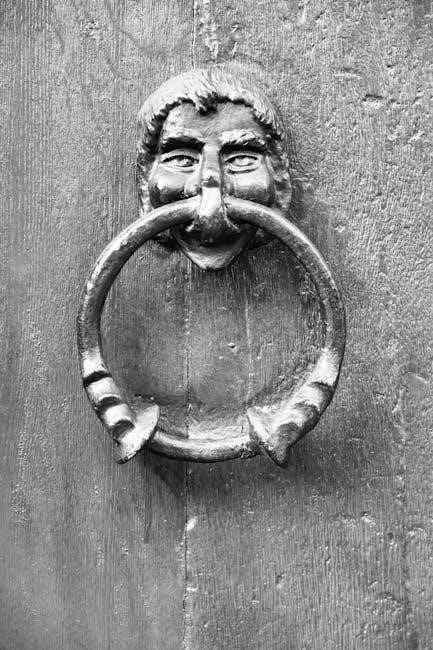
Restoration and Maintenance Tips
Proper cleaning, seasoning, and repair are essential for preserving antique cast iron Dutch ovens. Gentle techniques and avoiding harsh chemicals help maintain their historical charm and functionality.
Cleaning and Seasoning Antique Cast Iron
Cleaning and seasoning are crucial for preserving antique cast iron Dutch ovens. Start by gently scrubbing with mild soap and water, avoiding harsh chemicals or abrasive materials that can damage the finish. For stubborn grime, mix baking soda and water to create a paste, then scrub lightly. Rinse thoroughly and dry with a soft cloth to prevent rust. Seasoning involves applying a thin layer of cooking oil to the entire surface, including handles and lids, then baking at 350°F (175°C) for an hour to seal the finish. Regular seasoning maintains the non-stick properties and protects against rust. Always avoid putting cast iron in dishwashers or using metal scourers, as this can strip away seasoning. Proper care ensures your Dutch oven remains functional and retains its historical charm for generations.
Repairing Damaged or Rusty Pieces
Repairing damaged or rusty antique cast iron Dutch ovens requires careful attention to preserve their integrity; Start by assessing the damage: light rust can be removed with a wire brush or vinegar soak, while deeper rust may need sanding. Avoid using harsh chemicals, as they can harm the metal. Once cleaned, apply a thin layer of cooking oil and bake at 350°F (175°C) to re-season. For cracks or breaks, professional welding may be necessary. Minor chips or pits can be smoothed with fine-grit sandpaper. After repairs, ensure the piece is thoroughly seasoned to prevent further rust. Regular maintenance and proper storage are key to preventing damage and extending the life of your antique Dutch oven.
Best Practices for Long-Term Preservation
Preserving antique cast iron Dutch ovens involves regular maintenance and proper storage. After cleaning, always season the cookware to prevent rust. Store ovens in a dry place, avoiding humidity. Do not leave them outdoors or in damp environments. Lightly oiling the surface can provide additional protection. Avoid using harsh detergents or abrasive cleaners, as they can strip seasoning. For long-term storage, wrap the Dutch oven in a breathable material like paper or cloth. Never store it in plastic, as moisture can accumulate. Displaying pieces on a rack or shelf allows air circulation, reducing rust risks. Seasoning should be reapplied periodically to maintain the protective layer. Following these practices ensures your antique Dutch oven remains functional and retains its value for future generations.

Valuation and Collecting
Valuation of antique Dutch ovens depends on condition, rarity, and manufacturer. Griswold and Wagner pieces are highly sought after. Buy from reputable dealers or auction houses. Building a collection requires patience and knowledge of market trends.
Determining the Value of Antique Dutch Ovens
Determining the value of antique Dutch ovens involves assessing condition, rarity, and historical significance. Pieces from renowned manufacturers like Griswold and Wagner often command higher prices. The presence of clear maker’s marks, pattern numbers, and minimal wear can significantly increase value. Restoration quality and original finishes also play a role. Rare sizes, such as smaller or oversized ovens, are highly sought after by collectors. Auction houses and online marketplaces provide insights into current market trends. Consulting experts or appraisers is recommended for accurate valuations. Factors like provenance and cultural significance can further enhance an oven’s worth. Collectors should research comparable sales to understand fair market value before purchasing or selling.
Where to Buy and Sell Vintage Cast Iron
Vintage cast iron enthusiasts can find and sell antique pieces through various channels. Antique shops, flea markets, and estate sales are excellent places to discover rare Dutch ovens. Online platforms like eBay, Etsy, and Facebook Marketplace offer wide reach for both buyers and sellers. Specialty cookware stores and collector forums also cater to vintage cast iron. For sellers, high-quality photos and detailed descriptions are crucial for attracting serious buyers. Consider consulting appraisers or joining collector communities for valuation guidance. Platforms like Ruby Lane and specialized auction houses are ideal for rare or high-value items. Whether buying or selling, research and networking are key to successful transactions in the vintage cast iron market.
Building a Collection: Tips for Beginners
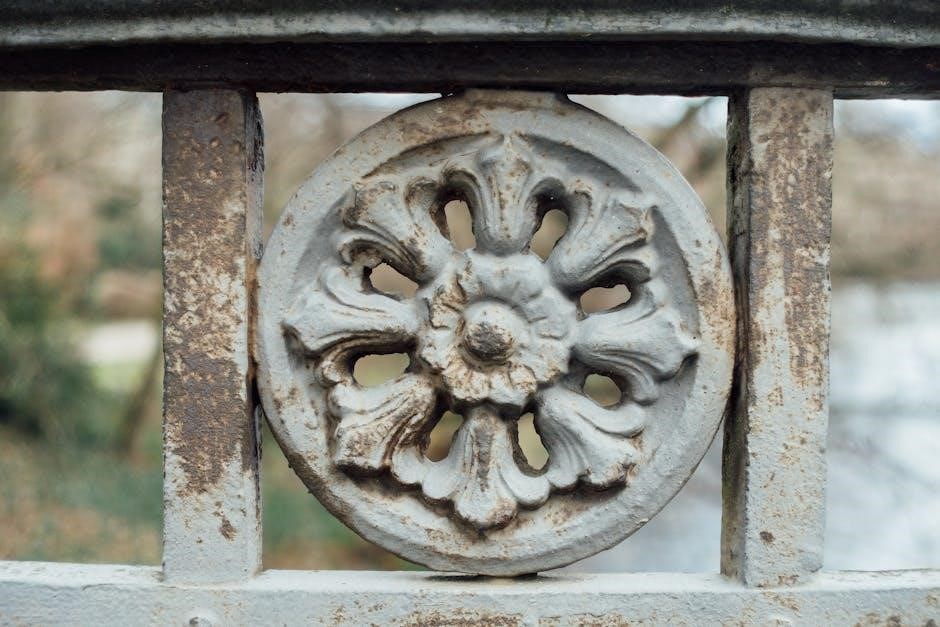
Starting a collection of antique cast iron Dutch ovens can be rewarding and enjoyable. Begin by focusing on common, affordable pieces from well-known manufacturers like Griswold or Wagner. Learn to identify markers, such as logos, pattern numbers, and foundry stamps, using resources like The Book of Griswold & Wagner. Set a budget and prioritize condition, as heavily damaged pieces may require costly restoration. Join collector communities or forums for advice and support. Consider starting with smaller, more accessible items before investing in rare or high-value ovens. Lastly, always research sellers and pieces thoroughly to ensure authenticity and fair pricing. Building a thoughtful and meaningful collection takes time, patience, and dedication.
Antique cast iron Dutch ovens are timeless treasures, blending history, craftsmanship, and culinary utility. Collectors and cooks alike cherish them for their enduring value and charm.

Final Thoughts on Antique Cast Iron Dutch Ovens
Antique cast iron Dutch ovens are not just cooking vessels but also historical artifacts that connect us to the past. Their durability, versatility, and craftsmanship make them highly sought after by collectors and cooks alike. Identifying and restoring these pieces is a rewarding journey that combines research, patience, and passion. Whether used in modern kitchens or displayed as heirlooms, these ovens embody timeless charm and functionality. For enthusiasts, the hunt for rare pieces and the joy of preservation are as fulfilling as the stories they uncover. Cherish these culinary treasures, as they continue to inspire and endure for generations to come.
Resources for Further Research
For those eager to delve deeper into the world of antique cast iron Dutch ovens, several resources are available. The Book of Griswold and Wagner, often referred to as the “blue book,” is a comprehensive guide with over 1,000 photographs to aid in identification. Online forums and collector communities, such as The Cast Iron Collector, offer valuable insights and expertise. Additionally, websites dedicated to vintage cookware provide detailed articles on dating, logos, and restoration tips. Antique shops, flea markets, and specialized auctions are also excellent sources for discovering rare pieces. For enthusiasts, these resources provide a wealth of knowledge to enhance their understanding and appreciation of antique cast iron Dutch ovens.

